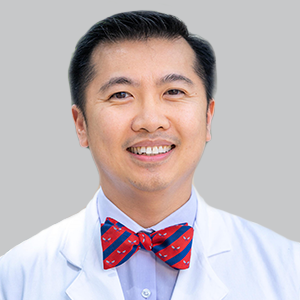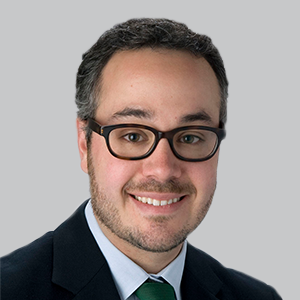Commentary
Article
The Role of Music & Movement in Parkinson Disease Treatment
Author(s):
Kenneth Ngo, MD, medical director for the Brain Injury Program at Brooks Rehabilitation’s 3 inpatient hospitals, highlighted how cotreatment between music therapy and physical therapy can significantly improve the overall quality of life for patients with Parkinson disease.
Kenneth Ngo, MD
Credit: Brooks Rehabilitation

Nearly one million patients in the U.S. are living with Parkinson disease (PD), and nearly 90,000 patients are diagnosed with PD each year.
PD is a progressive neurological condition that causes unintended body movements, such as uncontrollable shaking, difficulty with balance and coordination, and stiffness. Incidences of PD increase with age and are often accompanied by other medical complications like cognitive impairment, sleep disorders, mental health disorders, and sensory disturbances. Symptoms begin gradually and then worsen over time. As PD progresses, the patient may experience difficulty with speech and walking.
Although there is no known cure for PD, there are treatments and rehabilitation techniques that can help decrease the symptoms, improve function, and significantly improve a patient’s overall quality of life. A couple of proven treatments are the Lee Silverman Voice Treatment (LSVT) BIG program, the LSVT LOUD program, and music therapy.
On the physical therapy side of PD rehabilitation, the LSVT BIG program can be an ideal treatment, focusing on improved motor function and addressing symptoms such as hand tremors and shuffling of gait.
The LSVT BIG program is a high-intensity protocol provided by a certified physical therapist over the course of a month – 4 days a week for 4 consecutive weeks. The program involves high-amplitude, whole-body movements to counteract the smaller, slower movements typical of PD.
This program works to address the major symptoms that patients with Parkinson experience including tremors, rigidity and retropulsion, akinesia, postural instability, falls related to impaired gait like freezing or shuffling, and impaired dual tasking and cognition. Patients with Parkinson respond well to visual targets and auditory cues, which are easily incorporated into sessions provided by physical therapists.
BIG walking is also emphasized in each session, with or without assistive devices, starting in a relatively closed environment and progressing slowly to more open environments with obstacle courses and uneven surface negotiation.
Often used in conjunction with physical therapy programs like LSVT BIG for PD is LSVT LOUD and music therapy.
Research shows that patients with Parkinson can benefit from the rhythmic nature of music as it can assist in improving gait, balance, and coordination. Music therapy has also emerged as a powerful and proven approach to addressing not only the physical, but the emotional, cognitive, and social needs of patients as well, demonstrating significant benefits for patients by supporting the recovery of speech, cognitive function, and emotional regulation. Even simply singing in conjunction with speech therapy has been shown to be successful for vocal improvements.1 Many of our colleagues report that their patients tolerate therapy better and can often reach their goals faster with the addition of music therapy.
The LSVT LOUD program was designed to improve speech and voice disorders in individuals with PD and other neurological conditions. It focuses on increasing vocal loudness, as patients with PD often have a reduced vocal volume. By targeting loudness, the program aims to improve overall speech quality, giving patients the ability to speak more efficiently and at a healthy volume.
Innovative treatments like LSVT BIG and LSVT LOUD treatment techniques and music therapy services are designed and implemented for patients with PD to help improve the quality of their daily lives, both physically and mentally. For example, individuals may gain the skills they need to care for themselves independently, manage symptoms of disease, reintegrate into the community, and even resume work or school. Joining physical therapy and music therapy offers patients a treatment for Parkinson that is both fun and motivating, and many don’t realize just how hard their brains are working at the task. However, the improvements that they feel in their day-to-day lives showcase just how valuable the treatments can be.
REFERENCES
1. Mohseni Z, Mohamadi R, Habibi SAH, Saffarian A, Abolghasemi J. Voice improvement following conventional speech therapy combined with singing intervention in people with Parkinson's disease: A three-arm randomised controlled trial. Int J Lang Commun Disord. 2023;58(5):1752-1767. doi:10.1111/1460-6984.12900
Kenneth Ngo, MD, is a board-certified Physical Medicine & Rehabilitation physician specializing in brain injury rehabilitation and related disorders. Ngo is the medical director for the Brain Injury Program at Brooks Rehabilitation’s 3 inpatient hospitals. He also serves as medical director of Brooks Rehabilitation Hospital – University Campus and the Brooks Center for Innovation. Ngo provides care for patients with complex, catastrophic neurological injuries as well as other brain injuries, in both inpatient and outpatient care settings, through the entire continuum of brain injury rehabilitation.
Newsletter
Keep your finger on the pulse of neurology—subscribe to NeurologyLive for expert interviews, new data, and breakthrough treatment updates.





